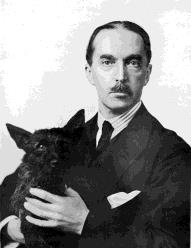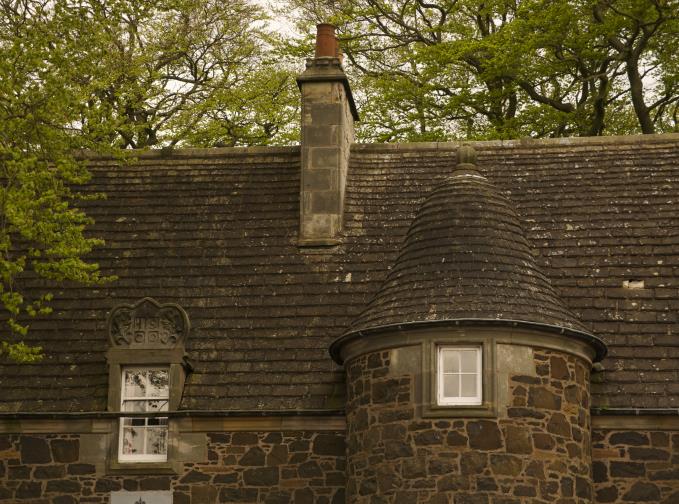Improving public understanding of architecture and the built environment via the online Dictionary of Scottish Architects
Submitting Institution
University of St AndrewsUnit of Assessment
Art and Design: History, Practice and TheorySummary Impact Type
CulturalResearch Subject Area(s)
Built Environment and Design: Architecture
Studies In Human Society: Policy and Administration
Summary of the impact
In 2006 Professor David Walker and his team at the University of St
Andrews launched a fully searchable, free, online database that has
transformed the ways in which anyone interested in Scottish architecture
from 1840 onwards engages with the subject. The Dictionary is
widely used by archivists, family historians, house owners, estate
agencies, independent conservation campaigners, architects, planners and
heritage bodies, schoolchildren and teachers, students and scholars. Its
worldwide impact is attested by the organisers of related Canadian and
South African websites, as well as by feedback from international users
and a current hit rate of more than 3.8 million per year.


Robert Lorimer and his work: the gatehouse at Earlshall, Fife, 1900
Underpinning research
A pilot scheme established by Professor Walker in the School of Art
History in 2001 initiated a three-year AHRB/AHRC-funded project (2002-5)
employing two FTE researchers, Yvonne Hillyard, Leslie Harris (one year
only) and Abigail Grater. Their task, under the leadership of Professor
Walker (part-time Professor in the School from 1994), was to create a
website (R1) as a public portal to information drawn systematically from a
wide range of published and important unpublished primary sources, many of
which are not readily accessible to the general researcher. These
included: Scottish trade directories; RIBA nomination papers and other
archives; newspaper and journal reports; details of buildings listed by
Historic Scotland and recorded by the RCAHMS; student dissertations and
theses; and information from Dean of Guild records, architects' office
papers and from architects themselves. Professor Walker's own research
files, however, provided the core data for the project, along with his
stream of publications on architects, types of building and conservation
matters (for a selection see R2-6). He also wrote new essays for the
website on the rise of the architectural profession in Scotland,
1840-1940, and on recent developments in Scottish architectural history.
The website is founded on the idea that the ready availability of
reliable data will both facilitate traditional research and provide a
shortcut to new approaches. Since its launch in 2006 it has provided
detailed, verified data on all architects (and some engineers) known to
have worked in Scotland in the period 1840-1940; a second phase covers
1940-1980. By July 2013 it included 14,743 biographical and 57,089
building entries.
During the research many lesser-known architects were discovered and the
Dictionary grew far beyond its original bounds. Its significance
was recognised by financial contributions from charitable bodies and
businesses (Aberbrothock, Binks, Gordon Fraser, Pilgrim and Russell
trusts; Bank of Scotland, Burrell Company, EDI Group, Historic Scotland,
Marc Fitch Fund, McTaggart & Mickel and the Royal & Ancient Club),
which enabled the researchers to continue part-time after 2005. Since
completion of the initial project Professor Walker (now Emeritus in St
Andrews) has overseen research into the period 1940-1980 in collaboration
with Dr Miles Glendinning of Edinburgh University and Yvonne Hillyard, now
employed by Historic Scotland.
What the Dictionary database provides is accurate, detailed,
factual material about the careers of architects and some engineers
working in Scotland and the buildings they designed, whether constructed
or not. It sets these in the context of the development of the
architectural profession and the economic and social movements that
affected the creation of buildings and the establishment of careers.
Bibliographical references are also given to enable users to pursue their
own research, and the website benefits from the input of individuals
around the world. Information received as a result of an invitation on the
site to provide corrections or new data is checked by the team and updated
frequently. The website is therefore unusual in its longevity as well as
its rigorous standards.
References to the research
Key outputs
R1. D. Walker (with A. Grater, L. Harris & Y. Hillyard, et. al.),
2006, www.scottisharchitects.org.uk
Database. This was part of the School's 2008 RAE submission when 75% of
our work was judged to be of international significance.
All of the following are substantial publications of 2* or greater
quality.
R2. D. M. Walker, `The Country Houses, larger villas and related hotel
designs of Sir John James Burnet', in A. J. Rowan & I. Gow (eds), Scottish
Country Houses 1600-1914, Edinburgh University Press, 1995, 298-323.
ISBN 0 7486 1077 4.
R3. D. M. Walker, `Designing the Royal College, Glasgow', in D. C. Mays,
M. S. Moss & M. K. Oglethorpe (eds), Visions of Scotland's Past:
Looking to the Future, Tuckwell Press, 1999, 97-121. ISBN 1 86232
072 1.
R4. D. M. Walker, `Presbyterian variations on themes by Sharpe and Pugin:
the Scottish work of the Hays of Liverpool', Architectural Heritage,
13, 2002, 99-127. ISSN 1350 7524. DOI: 10.3366/arch.2002.13.1.99
R5. D. M. Walker, `Inns, Hotels and Related Building Types' &
`Business and Commercial Premises', in G. Stell, J. Shaw & S. Storrier
(eds), Scottish Life and Society: A Compendium of Scottish Ethnology:
Scotland's Buildings, Tuckwell Press, 2003, 127-189 & 624-679.
ISBN 1 86232 123 X.
R6. D. M. Walker, `Old Scotch: Victorian and Edwardian High Baronial'
& `Radical Restorations of the Late Twentieth Century: Recollections
from the Front Line', in A. Dakin, M. Glendinning & A. Mackechnie
(eds), Scotland's Castle Culture, John Donald, 2011, 93-142 &
173-186. ISBN 978 1 906566 33 3.
Details of the impact
Usage has grown from about 1.38 million hits in 2008 to over 3.8 million
per year in 2012-13 and by July 2013 was rising by about 16% p.a. [S6]. In
addition to the sheer number of hits achieved by the website, and
first-hand knowledge of how the Dictionary is used in
universities, there is plentiful evidence of how the site serves a wide
variety of people across the world, and of its importance for their
research, whether for work or leisure.
Family historians find it invaluable for investigating individual houses
and estates and their architects. Such enquiries may be made purely for
personal interest or in connection with proposed alterations or the sale
of properties, as reported by professional archivists who deal with public
requests of this nature and a researcher for a national firm of estate
agents, who says `I frequently find information that the owners are
unaware of' [S3]. Legal questions about the copyright of drawings in
archives are also easily settled by the reliable biographical data offered
by the Dictionary.
Architects and planners use the website as a quick way to research
project sites and one respondent from a major Edinburgh firm comments that
the value of the Dictionary becomes especially evident when they
work on English commissions: `I can readily recall projects elsewhere
that have taken several hours to get to the same level of understanding
that would take less than five minutes for a similar project in Scotland'
[S4]. This firm estimates the financial savings to itself and its clients
as approximately £5000 per annum and the economic benefits of this across
the country — for individuals and the industry — are clear. A particular
strength of the Dictionary is that it provides an `amazing
depth and range of information by not limiting itself to the better
known and therefore better valued and publicised architects and
buildings', as noted by Docomomo, an international campaign group
that champions the often-unfashionable cause of 20th-century architecture
and prepares evidence in relation to listing, alteration or demolition
proposals [S5]. The importance of free access out of office hours is noted
by this entirely volunteer-run body, which also uses the Dictionary
to prepare outreach events such as lectures, walking tours and
exhibitions.
Educational use is also described by a teacher based in a primary school
which celebrated its 120th anniversary in 2012. Production of an eBook and
blogspot was a small part of the festivities, but the Deputy Head Teacher
was delighted to find easily accessible information about the history of
the building and to be given permission to incorporate it into the eBook
[S1].
In 2007 the day-to-day management of the database and employment of the
senior researcher were taken on by Historic Scotland (HS). As the
government body responsible for listing buildings and a major user of the
information, HS was eager to house the website, proof of its value as a
resource for the protection of Scotland's historic architecture. A direct
link is given on the HS web pages [S7]. Local interest is shown by the
fact that Yvonne Hillyard, one of the original researchers and now Manager
of the project based in HS, has published eight magazine articles since
2008 (in addition to a scholarly article, `George Mathewson: A
Far-travelled Dundee Architect', Architectural Heritage, XXII,
2012, 53-75) and given five talks to Scottish societies in the same
period.
International usage of the Dictionary is attested by the
Archivist at the British School at Athens [S2], who uses it particularly
to research the School's Byzantine Research Fund Archive, and by website
statistics and links from specialist information sites and related
databases, such as one devoted to the South African built environment
[S9-10]. The organiser of this and the Canadian equivalent use the Dictionary
for fact-checking and appreciate the opportunity to contribute new
material to it when found. This is a theme running through the feedback
and indicates a strong sense of ownership of the Dictionary by its
users. Because it is a record of people, more than of buildings, it has a
personal following that includes retired architects interested in tracing
old colleagues or students and keen to add to the record about projects
currently attributed to a firm or local government team. The pleasure
users experience from the website is evident in the feedback: `The only
criticism I have of the site is that it is addictive' [S3].
National coverage was given to the website on its launch, including in The
Times [S8]. The international impact of the Dictionary and
Professor Walker's work was recognised in 2008 by his appointment as
Honorary Patron of the Society of Architectural Historians of Great
Britain and in 2009 of a European
Heritage Award Medal of Honour by Europa Nostra for `Dedicated
Service', as recorded in the 2009 Awards Magazine [S11].
Sources to corroborate the impact
S1. Deputy Head Teacher at Sciennes Primary School, Edinburgh, (copy of
email and see also https://itunes.apple.com/qb/book/dozen-decades-at-sciennes/id535981882?mt=11,
viewable on iPad only, but printouts on file) corroborates the use of the
site by teachers for school projects.
S2. Archivist, British School at Athens (pdf of letter) corroborates that
free access to the information provided by the website enables non-HEI
researchers to conduct and contribute to scholarly research.
S3. Self-employed researcher for estate agents (copy of email)
corroborates that the website benefits commercial property companies as
well as the owners of houses or other buildings.
S4. Associate/Architectural Historian, Simpson & Brown Architects,
Edinburgh (copy of email) corroborates the value of the site for cost
saving in the architectural profession and for the provision of better
information to the clients of architects.
S5. Co-ordinator, Docomomo Scotland (pdf of letter) praises the Dictionary
for its comprehensive nature, accessibility out of office hours, and
usefulness for educational work (Docomomo campaigns for the preservation
of modern architecture in the face of proposals for demolition or
alteration).
The following report, websites and publication give evidence of the
wide recognition of the Dictionary in Britain and across the world.
S6. Usage figures for the year 1 August 2012 — 31 July 2013 reported by
the website designer, 7 September 2013 (report on file).
S7. http://www.historic-scotland.gov.uk/index/heritage/historicandlistedbuildings.htm
S8. Article by Marcus Binney, The Times, 26 June 2006, p.54
(pdf). This corroborates the date when the website was made public and the
national attention it received.
S9 http://www.designinform.co.uk/artssearch-research-guides/research-guide-no-1/architects.html
S10. http://www.artefacts.co.za/main/Buildings/style_det.php?styleid=361
S11. http://www.europanostra.org/laureates-2009/